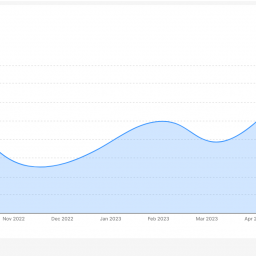Streamlining HR Processes with Workforce Management Software
Human Resources (HR) departments are at the heart of every organization, responsible for managing and coordinating a wide range of tasks related to employees, from recruitment and onboarding to payroll processing and performance management. As businesses grow and the workforce becomes more diverse and dispersed, HR processes can become increasingly complex and time-consuming. To address these challenges and improve HR efficiency, many organizations are turning to workforce management software. This powerful tool offers a comprehensive set of features that streamline HR processes, enhance employee experiences, and drive organizational success. In this article, we explore the benefits and applications of workforce management software in streamlining HR processes.
1. Simplified Recruitment and Onboarding
Attracting and retaining top talent is crucial for organizational success. Workforce management software simplifies the recruitment process by providing tools for posting job openings, managing candidate applications, and tracking recruitment metrics.
Moreover, the software streamlines onboarding, automating tasks such as document collection, employee orientation, and training. By digitizing and automating these processes, HR departments can onboard new employees more efficiently, reducing paperwork and administrative burden.
2. Centralized Employee Data and Records
Workforce management software serves as a centralized repository for employee data and records. HR teams can securely store and access employee information, including personal details, job history, certifications, and performance evaluations.
Having all employee data in one place enables faster and more accurate decision-making, eliminates the risk of data duplication, and ensures compliance with data privacy regulations.
3. Time and Attendance Tracking
Accurate time and attendance tracking are essential for managing labor costs and payroll processing. Workforce management software offers various time-tracking options, including biometric devices, mobile apps, and web-based interfaces.
By automating time tracking, HR departments can ensure precise payroll calculations, reduce errors, and improve overall workforce productivity.
4. Leave Management and Absence Tracking
Managing employee leaves and absences can be challenging, especially in larger organizations. Workforce management software provides a streamlined process for requesting, approving, and tracking leave.
Automated absence tracking helps HR teams manage staffing levels, plan for coverage, and ensure compliance with leave policies and regulations.
5. Performance Management and Training
Effective performance management is crucial for employee development and engagement. Workforce management software enables HR teams to set performance goals, track progress, and provide timely feedback to employees.
Additionally, the software can automate training and development initiatives, making it easier for employees to access learning resources and improve their skills.
6. Payroll and Compensation Management
Workforce management software integrates with payroll systems, simplifying payroll processing and compensation management. The software can automatically calculate wages, taxes, and deductions, ensuring accurate and timely payments to employees.
By streamlining payroll processing, HR departments can save time, reduce errors, and enhance employee satisfaction with timely and accurate compensation.
7. Reporting and Analytics
Data-driven insights are invaluable for strategic decision-making. Workforce management software provides robust reporting and analytics features, offering HR teams valuable insights into workforce metrics, trends, and patterns.
HR leaders can use this data to identify areas for improvement, make data-backed decisions, and develop effective HR strategies.
Conclusion:
Workforce management software has emerged as a game-changer in streamlining HR processes and improving overall HR efficiency. From simplified recruitment and onboarding to centralized employee data, time and attendance tracking, leave management, performance management, payroll processing, and reporting and analytics, this software offers a comprehensive suite of tools that enhance HR productivity and employee experiences.
The adoption of workforce management software is not just a technological upgrade; it represents a strategic investment in optimizing HR operations and driving organizational success. As businesses continue to recognize the value of efficient HR processes and data-driven decision-making, workforce management software will become an indispensable tool for HR departments seeking to thrive in the dynamic and competitive business landscape.
















